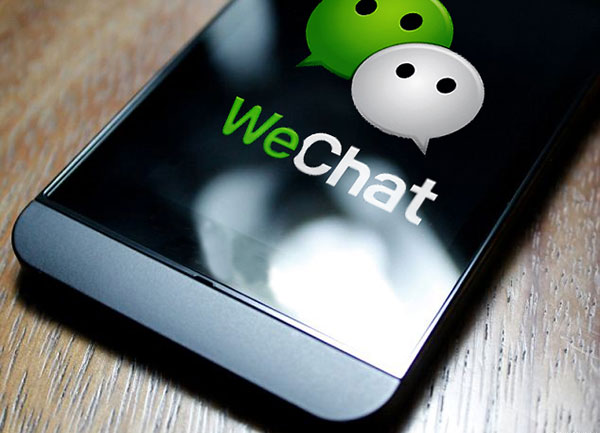Wechat Marketing
WeChat has hit the headlines as China’s most popular chat application. The app, which has been showing raving success, has for quite some time been a beacon and guide for the evolution of the mobile social chat industry. Initially, the app specialized in popularizing companies and brands through Wechat marketing, as well as incorporating the services of third-party applications into the messaging service. These trends have already been picked up by both WhatsApp and Messenger which are Facebook-owned among other applications which have jumped on the bandwagon, and it seems that the next point of interest will be payments.
Wechat Have Over 697 Million Active Users
Tencent, WeChat’s parent company (also known to Chinese as Weixin) had reported fantastic end-of-year financial performance report. Among the exciting news that were announced included the company registering its best quarterly revenue proceeds in three years. Notable figures from the report are that WeChat have up to 697 million clients who are active users worldwide every month which translates to an addition of nearly 200 million to that figure from the previous year. Effective Wechat marketing to reach these users could clearly be the difference between success and failure in the Chinese market.
Wechat Has Created a Cashless Society in China
Aside from mobile text, voice, and video chats, the application offers a timeline for social network (more like the Facebook app), account brands, games, shopping, and that’s just the tip of the iceberg. Payment is another sector, and over the previous year, Tencent has put significant concentration into its other China-based service, WePay. This service is utilized to exchange cash between WeChat clients (peer-to-peer) and make online payments and with retailers who are taking part offline. Tech in Asia run a test on the service for a day in China and came out sensibly awed, in spite of the fact that it appeared there was an opportunity to get better.
Beforehand, Tencent had revealed that as the 11th month of 2015, 200 million client cards were appended to the payment application. This was mainly due to a virtuoso campaign that aimed to take advantage of China’s tradition of sending red envelopes amid the China New Year espanolcial.com/. As of now, we can say with a high level of confidence that the figure has surpassed 300 million with the volumes only expected to increase.
Tencent said back in March of 2016 that it cashed over $46 million in bank exchange revenue from WePay with China accounting a huge chunk of these fees. By this time the service had just gone online in South Africa in the application’s maiden overseas expansion, with Tencent putting it forth internationally to dealers who can utilize it to take payments from Chinese voyagers.
Reuters revealed that the CEO of Tencent, Horse Mama informed journalists at a press conference session in Hong Kong that the organization took 0.1 percent on exchanges. This translates to the service reaping nearly $50 billion in bank exchanges that month. At that same pace that would mean nearly $550 billion in payments is passed through the service every year. This is almost double when compared to the $282 billion handled by PayPal each year.
Wechat vs Alipay
That is amazing, and it goes to demonstrate that WeChat is developing to be a threat to the Alibaba-owned payment service, Alipay. Alipay has not unveiled its yearly payment data since 2013, where it announced $519 billion. We, however, expect the figure to have increased to a more significant one by now. Although Alipay is China’s certain top payment choice boasting a figure of 500 million users and dishing out 200 million credit cards, the sheer ease and widespread acceptance of WeChat as a payment option play enormously in its bid.
Adding fuel to the fire, Tencent has dropped fee expenses for peer-to-peer exchanges. This move is a tactical one whose objective is to make WeChat the conventional way for friends to exchange cash. Another new approach entails charging clients an expense when they exchange an amount from their WePay wallet to their bank account. This acts as an incentive for the user to withhold from taking funds out of WeChat and hence holding the money in their account, which is apparent that it will be spent on or dispersed to other using the application.
Wechat’s Revenue Generator
WeChat is known to generate more cash from promotional advertising and games and as a result, its President, Martin Lau has been reported saying that they don’t expect WePay profits heavily relying on their policy of reducing merchant rates among other expenses. How, he further explains that the actual value of WeChat will be to improve the present way that people do business, for example, by strengthening future advertisements which will be done through a single click purchasing from clients. Also, it will build collaborations wuíth financial companies such as wealth managing corporation that Tencent owns and the online bank.
Centering back to the United States, Facebook’s policy for it social networking sites exhibits to be a bit backward as compared to the current situation with WeChat. However, potentially, the two sites are on a comparable track.
Back in 2015, Facebook transformed one of its applications, Messenger, into a service that would support brands over the due course, with Whatsapp likewise permitting their clients to interact with corporations. As of now, Facebook provides a payment option in the U.S. on a peer-to-peer platform only. However, we expect that it will go on further and offer much broader payment choices in the future once clients of both of its chat application get used to connecting to companies.
Hub of China offer Wechat marketing services – if you are interested please get in touch


